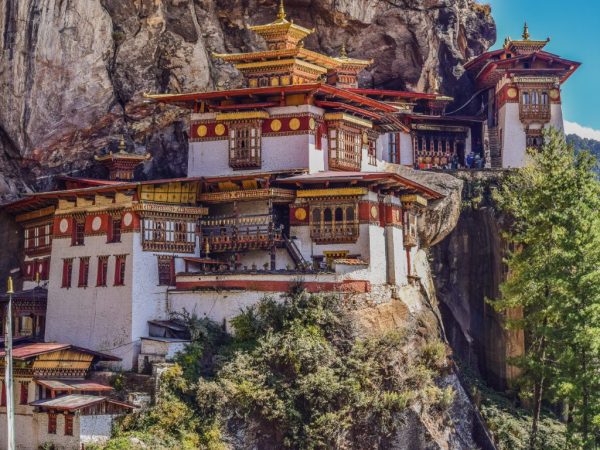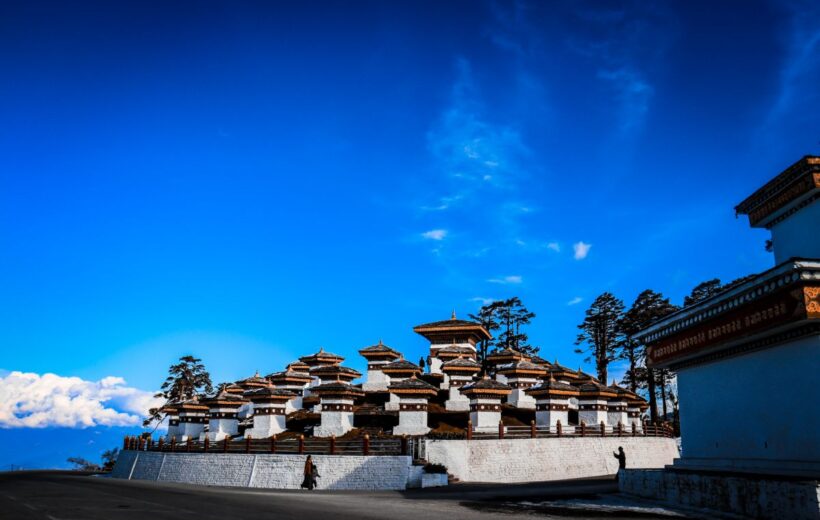Overview
Tour Route: Paro – Thimphu – Punakha – Gangtey – Punakha – Paro
Immerse yourself in Bhutan's rich culture by visiting ancient fortresses known as dzongs and exploring charming village farmhouses. Enjoy stunning mountain views as you travel through the beautiful Paro, Punakha, and Gangtey valleys. Visit the lively Weekend Market, where you can find fresh produce and traditional handicrafts. Learn about Bhutanese farming practices and get a glimpse of rural life by visiting local farmhouses. Finally, experience the famous hike to the Tiger's Nest Monastery, a must-see in Bhutan.
Included/Excluded
- The Bhutan SDF
- All accommodations
- Meals and mineral water
- A licensed English-speaking guide
- A driver and vehicle
- Air fare
- A visa fee of US$40
- Alcohol
- Gifts/Souvenirs
- Travel insurance and personal bills
- Museums & Monument Fees
Tour Plan
Day 1: Arrival in Paro and Sightseeing
When you arrive in Paro, our representative will greet you and assist with hotel check-in. If your flight arrives in the morning, you'll visit the Rinpung Dzong, known as the "fortress of the heap of jewels." This dzong has a fascinating history and features beautiful wall paintings depicting Buddhist stories. Next, you'll visit Kyichu Lhakhang, Bhutan's oldest temple, built by Tibetan King Songtsen Gampo in the 8th century. In the afternoon, enjoy a leisurely stroll through Paro town, explore the market, and meet locals. Spend the night at a hotel in Paro.
Day 2: Thimphu City Tour
After breakfast, drive to Thimphu. Your sightseeing in Thimphu includes visits to the Folk Heritage Museum and the School of Arts and Crafts. In the afternoon, visit Kuenselphodrang, which offers a stunning view of the Thimphu valley and is home to a giant Buddha statue, the largest bronze Buddha statue in the world at 169 feet. In the evening, explore Tashichhodzong, a beautiful medieval fortress-monastery that houses most of the government offices and the King's Throne Room. Later, take a stroll through Thimphu city to experience the local lifestyle. Overnight at a hotel in Thimphu.
Day 3: Thimphu to Punakha
In the morning, drive to Punakha, stopping for tea at Dochu La Pass (3,100 meters). This pass, marked by Bhutanese chortens and prayer flags, offers spectacular views of the Himalayas on a clear day. On the way, stop at Metshina Village and take a 20-minute walk through rice fields to Chimi Lhakhang, a fertility temple dedicated to Lama Drukpa Kuenley, also known as the Divine Madman. You can receive a special fertility blessing here. Upon arrival in Punakha, visit the Punakha Dzong, which is beautifully located between two rivers. Overnight at a hotel in Punakha.
Day 4: Village Walk in Punakha and Drive to Gangtey
Today, take a village hike, starting with a walk across Bhutan's longest suspension bridge. Explore a local village, visit a farmhouse, and learn about the architecture and lifestyle. Enjoy lunch at a farmhouse with Bhutanese butter tea and local wine called "ara." After lunch, drive to Gangtey, passing through dense forests of oak and rhododendrons. From Wangdue, ascend to Lawal Pass, near Pele La, the crossover point into central Bhutan. After a short downhill drive from Lawal Chorten, arrive at Gangtey village, where you can see the picturesque Black Mountain range. Visit Gangtey Goenpa and interact with monks. Overnight at a hotel in Gangtey.
Day 5: Gangtey to Punakha
In the morning, hike through Gangtey valley to explore nearby villages. The valley is surrounded by high-altitude dwarf bamboo, pine trees, hiking trails, and farmhouses with impressive art and wood carvings. Visit some farmhouses to see the local way of life. You can also visit the Nature Information Center, which has informative displays about the cranes and the valley environment. Later, drive back to Punakha. Overnight at a hotel in Punakha.
Day 6: Punakha to Paro
After breakfast, drive back to Paro, stopping in Thimphu for lunch. After lunch, visit the popular Weekend Market, the largest vegetable market in the country. You'll see a variety of foods, including baskets of fiery chilies, fresh cheese, and fruits, as well as stalls selling Bhutanese handicrafts and household items. This is a great opportunity for photography and to mingle with locals. Continue driving to Paro and spend the night at a hotel.
Day 7: Hike to Tiger’s Nest Monastery
This morning, hike to Taktsang Goemba, also known as Tiger’s Nest Monastery, Bhutan’s most famous monastery. The monastery is perched on the edge of a steep cliff, about 3,000 feet above the Paro Valley at an altitude of 10,400 feet. Lunch is served at the Cafeteria Restaurant, located halfway up the mountain. After enjoying your time there, hike back down to the valley floor. Spend the night at a hotel in Paro.
Day 8: Departure
Enjoy breakfast and a leisurely morning until it's time to head to the airport for your flight home. We hope you had a wonderful time on this Bhutan family tour and look forward to welcoming you back on your next visit.
Tour Map
FAQ
Bhutan is a year-round destination. There are four seasons: summer (June to August), autumn (September to November), winter (December to February) and spring (March to May). But because of the range of altitudes in the country, and the influence of the north Indian monsoons, the climate is incredibly varied.
In the south, the humid, subtropical climate is fairly consistent year-round, with temperatures between 15oC and 30oC. Central Bhutan, with its temperate forests, has a more seasonal climate, with warm summers and cool, dry winters. The northern regions are much colder during winter. Because of the high altitude, mountain peaks are snowy year-round and the lower reaches remain cool in summer.
In summer, the Indian monsoon season runs from late June or July to late September, mostly affecting the southern regions. Most farming activities take place in the summer, when crops thrive in verdant landscapes.
Autumn, from late September or early October to late November, follows the rainy season. It is characterised by bright, sunny days and some early snowfall at higher elevations. It’s the season of feasts and festivals as farmers reap the fruits of their work.
From late November until March, the crisp, clear and sunny winter sets in, with frost throughout much of the country and snowfall common above elevations of 3,000 metres. The winter northeast monsoon brings gale-force winds at the highest altitudes through high mountain passes, giving Bhutan the name Drukyul, which means Land of the Thunder Dragon in Dzongkha (Bhutan’s national language).
Bhutan’s generally dry spring starts in early March and lasts until mid-April. It is a botanist’s delight, with nature in full bloom. Summer weather commences in mid-April with occasional showers and continues to late June.
The SDF is USD 100 per night for adults from all countries except for India. Children aged between 6 years and who have not yet turned 12 are eligible to pay USD 50 per night. Children who have not yet turned 6 years old do not have to pay any SDF.
The SDF for Indian nationals (showing a valid Indian passport or Voter ID card) is Nu. 1,200 (or the equivalent amount in Indian rupees) per person, per night. Children aged between 6 years and who have not yet turned 12 are eligible to pay Nu./INR 600 per night. Children who have not yet turned 6 years old do not have to pay any SDF.
While most monuments in Bhutan are free, some are chargeable. For the full list of monument fees, please click here for more information. Children below 18 years will have a 50% concession and children aged five years and below will be exempted. Most monuments are open from 9am – 5pm each day. In June 2023 it was announced that foreign visitors can now visit monuments whenever they are open to the general public, without any restrictions.















